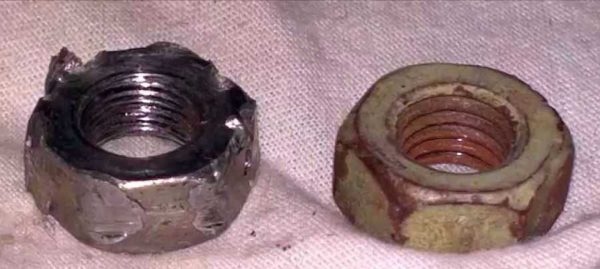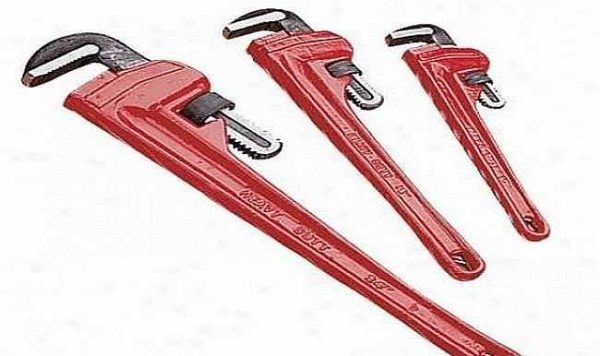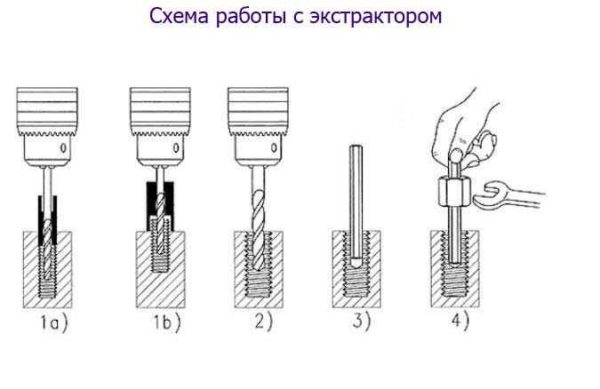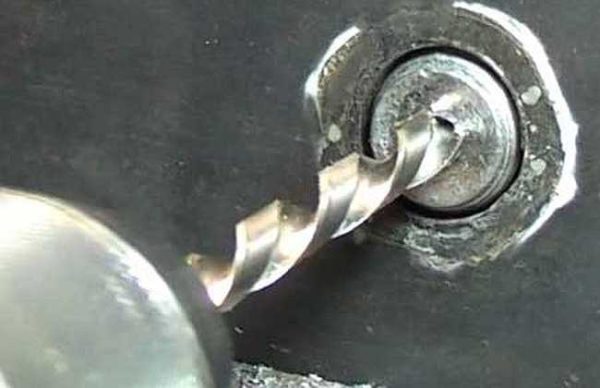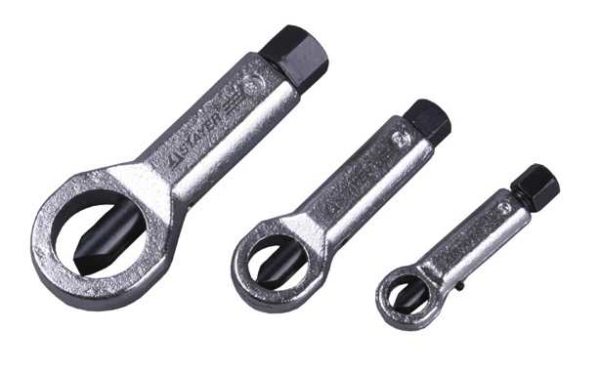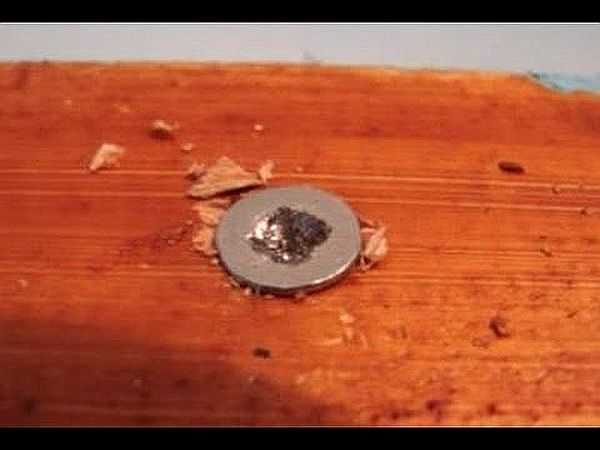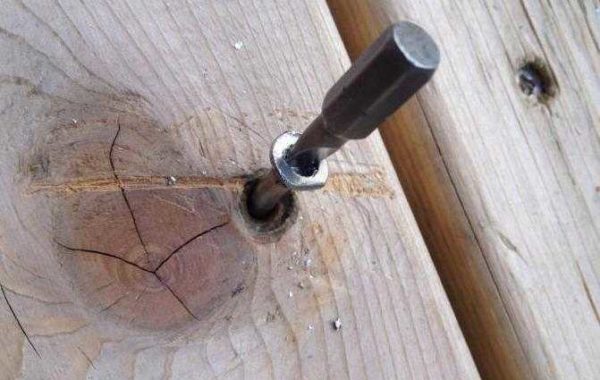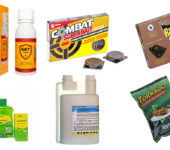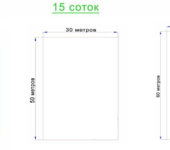How to unscrew torn off bolts, nuts, screws
Sooner or later, any owner is faced with a situation where a nut, bolt or self-tapping screw does not want to get out. There are several reasons for this: low quality metal, violation of technology (overheated self-tapping screws), rust, time, too much effort applied when tightening the connection. Nevertheless, you can unscrew the bolt with the torn off edges, the lapped nut, the rusted joint is possible. In this article, we'll talk about how to do this.
Unscrew the torn off bolts and nuts
Slicked-down edges on bolt heads or nuts are not uncommon. Excessive forces applied when tightening, and then loosening, often lead to the fact that the border between the bolt faces is erased. If the bolt is not unscrewed, ordinary keys are powerless in this case - they simply scroll, and the fasteners remain in place.
There are several ways to unscrew shear bolts and nuts:
- With a gas adjustable wrench. Due to the ribbed jaws, adjustable degree of "tightening" and a sufficiently large lever, an adjustable wrench helps in most cases. This tool is not uncommon, so the first thing to do if you need to unscrew fasteners with lapped threads is to try this method.
- Make new faces. Smaller but sharper. This will allow you to better grip the nut with the same adjustable gas wrench. Faces do:
- Grinder. Work carefully so as not to damage the surface under the nut / bolt head. This is a risky endeavor and should be taken as a last resort.
- With a file. This method is more time consuming but safer. If there is no urgency, it is better to fine-tune the edges with a file.
- A pin can be welded onto the nut. Using your hands or using a lever, you can unscrew the bolt with the torn off edges. The same method helps if the thread is "stuck". During welding, the metal heats up, the rust is overheated, the dirt burns, after which the bolt or nut is unscrewed much easier.
- Weld a nut onto the licked head of the bolt. Then unscrew everything together with an ordinary key. But this method works if the caps are flat. If they are rounded, you can try to cut / grind off the top, then weld on the nut and try to unscrew it.
- An extractor can be used with large bolts. Cut off the cap or nut, drill a hole of the size "for the existing extractor". Insert the extractor pin and with a key, turn out the entire structure for the thick part, release the extractor.
If there is a plastic or rubber gasket under the bolt, remove it and try one of the suggested methods again. If you cannot unscrew the bolt with the torn edges by all these methods, one thing remains: cut / saw off the cap and drill out the pin.
Rusty nut
Another problem that is familiar to motorists (and not only) is a rusted nut and / or thread. In this case, do not make a heroic effort to unscrew the fasteners. Your edges will simply "merge" and another problem will be added to the boiling thread. If, after a couple of attempts, you can't unscrew, try the following methods one by one:
- Use a wrench to tap the bolt. There is a chance that the rust will crack and the nut can be unscrewed.
- Fill the compound with kerosene and wait. It will corrode the rust, after which it will be easier to unscrew the rusted nut. But during this operation, you cannot smoke, turn on welding, be near an open flame.
- Warm up the nut. The metal will expand, making it possible to unscrew it.The trick is to keep the nut warm and the bolt shank cold, so heating up quickly. To do this, use a construction hair dryer or open fire (be careful with this). If the screw is small, you can take a powerful soldering iron, heat it up to the maximum temperature, then quickly warm up the junction.
- This method will (almost) destroy the nut, so it should only be used in hopeless situations. Grooves are made on the edges (using a metal saw, grinder, file). They rest against this groove with a flat screwdriver, giving it a direction in the direction of unscrewing. They knock on the handle with a hammer. If there is at least a couple of moves, maybe it will turn out to be unscrewed.
- Use a special puller (pictured above). With the help of a bolt, the pin rests against one of the faces, after which you can try to move it from its place. Due to the fact that a lever can be fitted, it can work even in very difficult situations.
You can also fight rust with a lubricant. Try to fill the joint with a flowing multi-purpose grease (available in WD40 cans). After waiting a couple of hours, we try to work with a key. It didn't work - we try other methods one by one.
Self-tapping screws with torn off splines (asterisk)
If the overheated self-tapping screws are twisted / twisted a couple of times, their edges lose their sharpness, the screwdriver scrolls, and the screw itself remains in place. If it "sits" in wood, plaster, chipboard or other similar, not too hard materials, you can put a thin elastic band under the screwdriver (for example, for hair). Due to the elastic force, they achieve a tighter fit to the remaining edges, which helps to move the screw out of place. Other methods are more "traumatic":
- Cut grooves inside the "lapped" funnel using a flat screwdriver and unscrew. This method is quite dangerous: if the walls of the "funnel" are too thin, there is a possibility that the screw head will simply crumble from the effort. All that remains is the screw, which cannot be unscrewed.
- Drill out and unscrew with a small diameter extractor.
- Take a chisel, grind it to the size of the cap. Put it on the hat, hitting it well with a hammer a couple of times. A new hat is formed and, at the same time, existing rust may crumble (if the screw is stuck in the iron). Using the same chisel, try to move the stubborn screw from its place. To facilitate the process, you can drop oil on wood or WD40 grease on metal.
- Drill the material around the cap, take a tube with an inner diameter slightly larger than the diameter of the cap, put it on the cap. Pour glue inside. When the glue hardens, unscrew by the tube.
The remnants of a bolt or a stud without a cap can be unscrewed as follows: cut the left thread in the remaining body, drip a moment with glue, screw in the left tap, leave for an hour. Drop oil on the main thread and also leave for an hour. Unscrew when the glue has set. If the remnants of a self-tapping screw are stuck in the wood, it is easier to seal up this hole and install other fasteners nearby.

